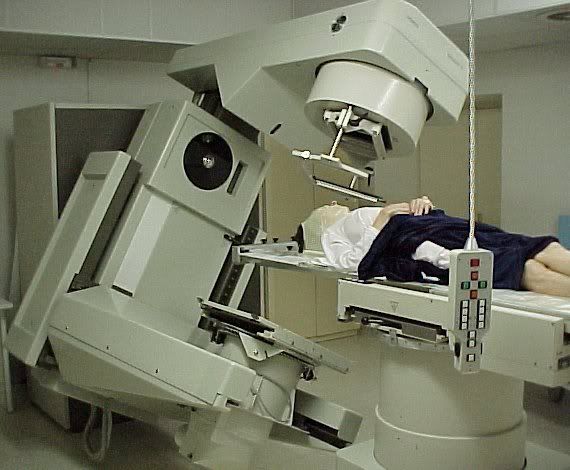Understanding Cardiopulmonary Resuscitation Decision Making: Perspectives of Seriously Ill Hospitalized Patients and Family Members.
Patients who receive terminal care that is inconsistent with their previously expressed wishes are more likely to be dissatisfied with end-of-life (EOL) care and consume considerable health-care resources. However, conversations about preferences for terminal care, such as cardiopulmonary resuscitation (CPR), occur infrequently, physicians and families are often unaware of patient preferences for life-prolonging therapies, and there is poor agreement between what a physician or family member thinks a patient would want and the patient's expressed preference. Furthermore, the increased use of “do-not-resuscitate” (DNR) orders for older patients, especially when patients and/or families are not involved in decision making, has raised ethical concerns. Several interventional studies that were designed to improve the process of EOL decision making did not enhance meaningful communication between the patient and the physician and, as a consequence, failed to affect subsequent clinical outcomes.
The apparent magnitude of the problem and the failure of current approaches to improve the situation strongly suggests that there are determinants of successful communication and decision making that are not well-understood. In order to improve quality of care more effectively, a greater understanding of the perspectives of seriously ill patients and their family members on communication and decision making related to CPR is needed.
Given that the majority of decedents in Canada are older patients with advanced medical disease or cancer who die in the hospital, the primary aim of this study was to provide comprehensive descriptions of this population's views on communication and decision-making issues related to CPR choices. A priori, we postulated that patients with different illnesses might have very different perspectives on these discussions and decisions. Patients with illnesses such as congestive heart failure and COPD may not conceptualize that they have a terminal illness despite the presence of significant symptoms and functional limitations, and despite the known short-term survival rates.
Patients with cancer may have a more progressive, predictable decline compared to patients with end-stage medical disease who experience acute exacerbations of symptoms with an unpredictable prognosis. This difference in disease trajectory has been found to influence the use of palliative care resources, intensive care resources, and the final location of death. It is possible that differences in disease course may affect the nature of doctor-patient interactions, and may influence patient and family perspectives on CPR decision making. Therefore, a secondary aim of this study was to explore whether patients with cancer and without cancer had different perspectives on CPR decision making.
Discussion
Studies of satisfaction with EOL care suggest that improvements in communication and decision making among patients, families, and providers are likely to have the greatest impact on improving the quality of EOL care. Before we can improve the situation with regard to decisions about resuscitation, we need to have a better understanding of patient and family perspectives. This is the first study that comprehensively describes the views of older hospitalized patients with life-limiting cancer and noncancer diagnoses and those of a family member as they pertain to CPR communication and decision making. Since the majority of deaths occurring in hospitals are secondary to noncancer causes, we believe that understanding the views of these patients and those of their families on communication and decision making about CPR is an important starting place for improving EOL care.
Despite the increased publicity and awareness about EOL decision making and advanced directives, little has changed in the acute care hospitals that we studied since Hofmann and colleagues described a similar proportion of seriously ill hospitalized patients who did not want to discuss preferences for CPR with their physicians. A significant number of patients in this study (37%) were not open to discussing EOL treatment options, and only half of them had an EOL order (eg, order for no CPR or no intubation) on their chart for their index hospitalization. Their unwillingness to discuss EOL issues may relate to a patient's desire to concentrate on staying alive rather than talking about death or to their uncertainty about which physician will be taking care of them when they are very sick. Alternatively, such patients may be expressing a desire that they want others to make decisions for them. More research is needed to understand the barriers to such conversations.
Interestingly, it was exactly those patients who were at highest risk of death or deterioration of their condition who had no family available to help with decision making (eg, older patients with impaired functional status living alone) who did not want to discuss resuscitation with their physician. If the conditions of these patients deteriorate to the point where they can no longer advocate for themselves, how will physicians know their preferences for EOL care? The self-assessed relevancy of EOL issues for patients seemed to be a strong predictor of their willingness to discuss CPR with physicians. Perhaps the starting point for CPR discussions should be a clear and frank discussion with the patient and the family about the patient's prognosis. Prognostic information provided early in the course of a serious illness may not only improve CPR decision making but may have a favorable impact on the overall patient satisfaction with care.
We found that patients' knowledge about the rationale and process of CPR and resuscitation, as well as the clinical outcomes, was very limited in our study population. Perhaps patients and family members know more than they reveal in this face-to-face questionnaire. However, the significance of this observation is that preferences for life-sustaining treatments, like CPR, vary depending on the patient's understanding of the burden related to the treatment, the outcomes, and the likelihood of those outcomes. The predominant clinical approach of constraining patients to choose various resuscitation options without adequate discussion about the burden of treatment, the potential outcomes, and the likelihood of those outcomes is likely a major contributing cause to the current problems related to discussions about resuscitation. Strategies to improve patient (and family) understanding of the process and the probabilities of certain outcomes of CPR are needed.
Given our findings of poor knowledge of CPR, and that some patients lack interest in discussing CPR, it is reasonable to conclude that for the situation to improve, physicians should be responsible for initiating these EOL conversations directly with their patients. In doing so, physicians should consider involving family members as the majority of patients and families view CPR decision making as a collaborative experience among the health-care provider, the patient, and the family. This is especially relevant to families who judge their loved one to be currently facing EOL issues. Looking back on the death of a loved one, some families would have wanted more information and more involvement in decision making. This is apparent in the results of our assessment of informational needs where we observe family members' ratings of the importance of various information bits as much more important compared to patients' ratings. Unfortunately, physicians rarely suggest to patients that they involve family members in resuscitation discussions and decisions. For future communication strategies to be successful, health professionals should attempt to engage the triad of the provider, the patient, and the family member, when possible and when considered desirable by the patient (and their family).
Our previous single-center studies looked at the actual process of decision making from both patient and caregiver points of view. The findings of this multicenter survey support our previous findings that patients and their family members have variable viewpoints on their preferred deliberation process and role in decision making, but more than half viewed the experience as an interaction among the patient, family, and doctor with a sharing of decisional responsibility, especially if the family member perceived that the patient was currently facing EOL issues. A shared decision-making model for EOL decisions was endorsed as the preferred option by an international consensus conference and is further supported by our own work in the critical care setting.
The clinical implications of this conclusion relates to how physicians approach patients to make CPR decisions. Often, physicians lay out the treatment options related to CPR and then ask, “What do you want us to do?” While this language may be acceptable to patients desiring active decisional roles, it may add to the anxiety, confusion, and suffering of patients desiring a shared or more passive role. Physician should attempt to elicit preferences for decisional role prior to determining treatment preferences. “Decision aids” or “informational leaflets” may help to inform patients and families and to facilitate shared decision making in the context of CPR and other EOL decision making in the hospitalized setting.
Our results would suggest that patients and families do not desire large quantities of information, and that knowledge about the expected course of illness and the resultant health state are the most important information elements to be communicated in such tools.

It is apparent from our comparisons of patient and family member preferences for their decisional role that there is poor agreement on what role the family plays in the setting of an incompetent patient. What should be done if the patient and family member disagree on involvement in decision making? There is emerging evidence that physicians do give consideration to family interests and perspectives, even if those perspectives are not necessarily important to the patient.
Moreover, in situations where family members or substitute decision makers disagree with the patient's prespecified wishes, in more than half of cases the patients prefer physicians to follow the family member's directions. Furthermore, when seriously ill hospitalized patients were asked what elements of care were important to them in their conceptualization of quality EOL care, more than 90% endorsed the concept of having their family member involved in the decision-making process. While this seemingly may conflict with patient autonomy, at least with elderly patients it has been argued that familial autonomy and familial decision making have social, legal, and ethical justifications. Certainly, many cultures and individuals put an emphasis on familial autonomy or on a more family-centered decision-making process.
Perhaps a persistent focus on patient autonomy, potentially prescribing roles for patients that they do not wish to play, may be responsible for the persistent failure of the system to improve communication and decision making at the EOL. Asking patients how they see these kinds of decisions being made represents an important starting point for such discussions.
The perspectives of cancer patients on CPR decision making were similar to those of noncancer patients. This suggests that the variability in preferences for discussion and decision making may depend more on the individual than on the diagnosis.
The strengths of our study include its comprehensive evaluation of the decision-making process from the patients' and family members' perspective in a targeted population at high risk for short-term mortality and likely to consume significant resources in their final months. The lack of a formal assessment of the mental status of study patients and the low numbers of family members participating in the interview are limitations of the study. The limited ethnic diversity of our study population from academic teaching hospitals may limit the generalizability to other groups of patients. However, the multicenter nature of our study enhances the generalizability of our findings.
Conclusions
Patients who have advanced cancer and medical illnesses and are admitted to acute care hospitals do not have good knowledge about CPR. However, more than a third of patients did not wish to discuss preferences with their physician, and those patients who had a poorer understanding of their prognosis were less willing to have these discussions. Most patients prefer shared decision making with family and physician involvement. There are no significant differences between cancer and advanced medical patients as to the preferred role in decision making. Strategies that improve the patient's understanding of CPR, foster a willingness to discuss CPR, and involve patients, family members, and physicians in the decision-making process may improve the quality and quantity of CPR communication and decision making.




1 Comments:
What is the difference or I should say Are there any difference between a Chemical Code, Full Code vs a No Code/No CPR? This are the issues that our hospital, physicians, families and other healthcare workers are facing. In my own opinion, families I think are being misinformed about a Chemical Code vs No Code issues. It would probably be a Full Code or NO Code/DNR.
Post a Comment
<< Home